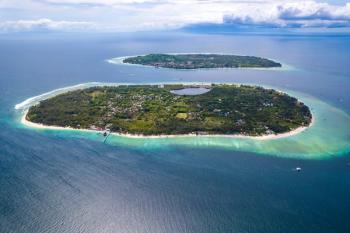
Portable Infrared Attenuated Total Reflection Spectrometer Tested for Food Analysis
A team of scientists created a portable infrared attenuated total reflection (IR-ATR) spectrometer and tested its food analysis capabilities against similar systems.
Having suitable methods for detecting the quality of food is important, and there are many ways that scientists test for different contaminants. One recent method that has become commonly used in this regard is infrared attenuated total reflection (IR-ATR), which enables the acquisition of evanescent field absorption with almost sample preparation, all while facilitating nondestructive analysis of analytes in any aggregate state (1).
A recent study, published in Applied Spectroscopy, introduced a portable IR-ATR device meant for food analysis, which can be used to analyze analytes deemed notable by food industries (1). The system centered around understanding fatty acid (FAs) composition in lipids; since normal lipid composition characterizes quality of foodstuffs like fish yet are vulnerable to environmental factors like water quality, capture season, and temperature, tracking fatty acids is key to understanding the true characteristics of lipids and how they affect food.
The system was also tested using representatives for mycotoxins and organic solvents. Mycotoxins are harmful secondary metabolites that are associated with fungal contamination. Their presence may induce harmful effects on the health of both humans and livestock, so detecting them is essential to food safety. As for organic solvents, food industries largely use them for constituent extraction from food matrices, though green extraction methods are less popular due to conventional approaches having superior performance. Both substances are essential to food processing, which explains why the IR-ATR system was tested mainly for them in addition to FAs.
The handheld IR-ATR device was tested against conventional laboratory IR-ATR spectroscopy using an FT-IR spectrometer to show the potential of the former system. Three types of model systems were used, each of which had a different sample within: N,N-dimethylformamide ((CH3)2NCH) (DMF) dissolved in water, stearic acid (C17H35CO2H) in ethanol, and DON (C15H20O6) in methanol. All these analytes represent the highlighted class of compounds, having characteristic bands in the mid-infrared (MIR) spectrum.
The comparison between systems confirmed multiple factors in both, including the detection of mycotoxins, the analysis of FAs, and the quantification of organic solvents. Notably, the compact system yielded similar analytical performance characteristics to the standard systems.
However, there is still work to be done before such a system is ready for mass usage. “Future studies aim at analyzing more complex systems including real fish samples, and extracts from various cereals containing fungal contaminants/mycotoxins along with advanced data analysis approaches for the development of label-free rapid screening methods,” the scientists wrote in the study (1).
Reference
(1) Fomina, P.; Femenias, A.; Hlavatsch, M.; Scheuerman, J.; Schäfer, N.; Freitag, S.; Patel, N.; Kohler, A.; Krska, R.; Koeth, J.; Mizaikoff, B. A Portable Infrared Attenuated Total Reflection Spectrometer for Food Analysis. Appl. Spectrosc. 2023, 77 (9), 1073–1086. DOI:
Newsletter
Get essential updates on the latest spectroscopy technologies, regulatory standards, and best practices—subscribe today to Spectroscopy.




